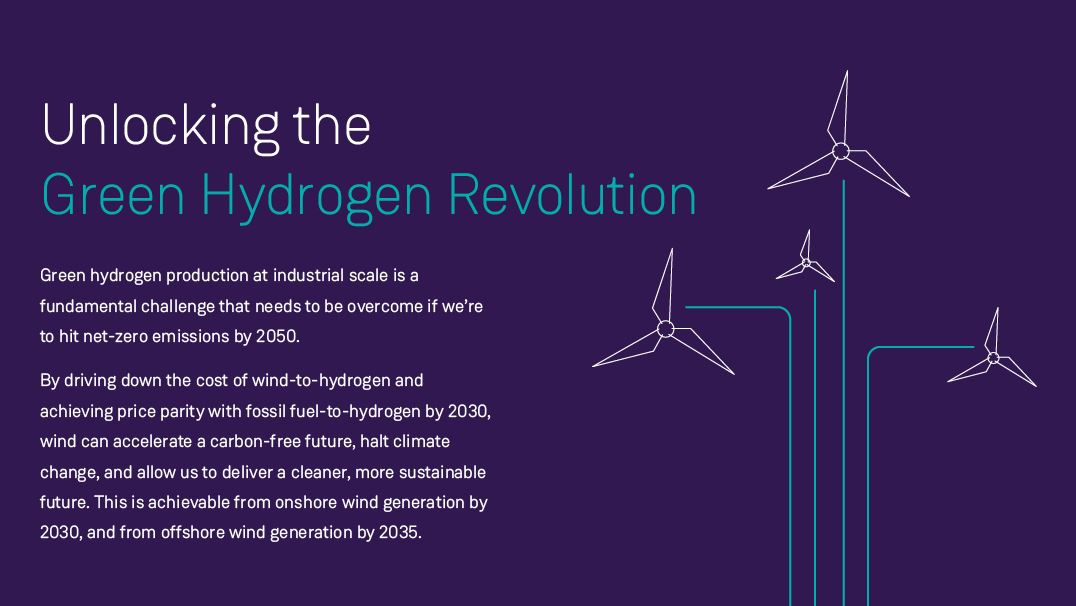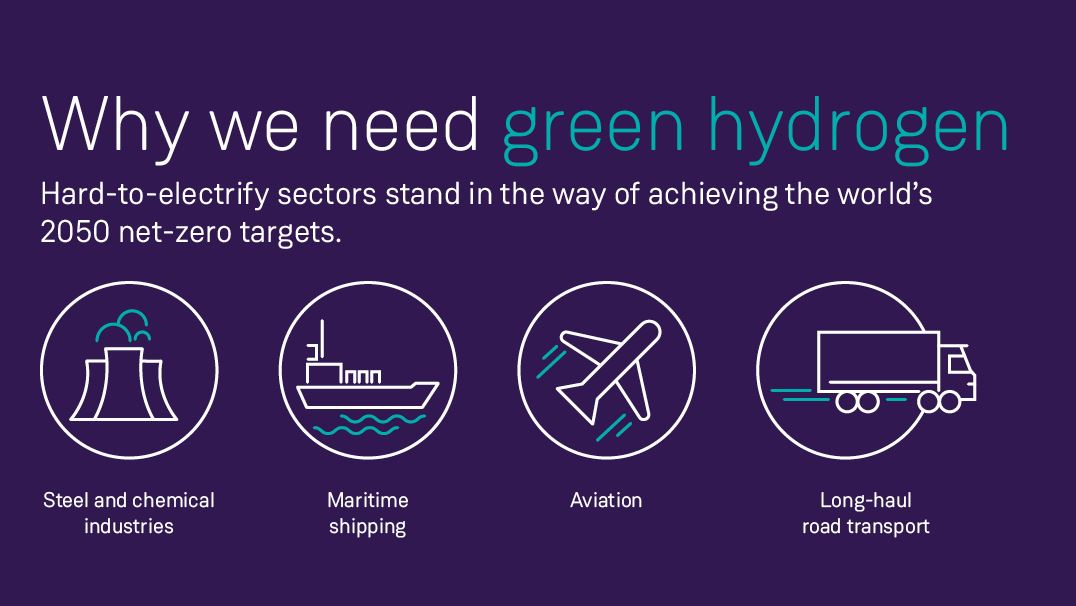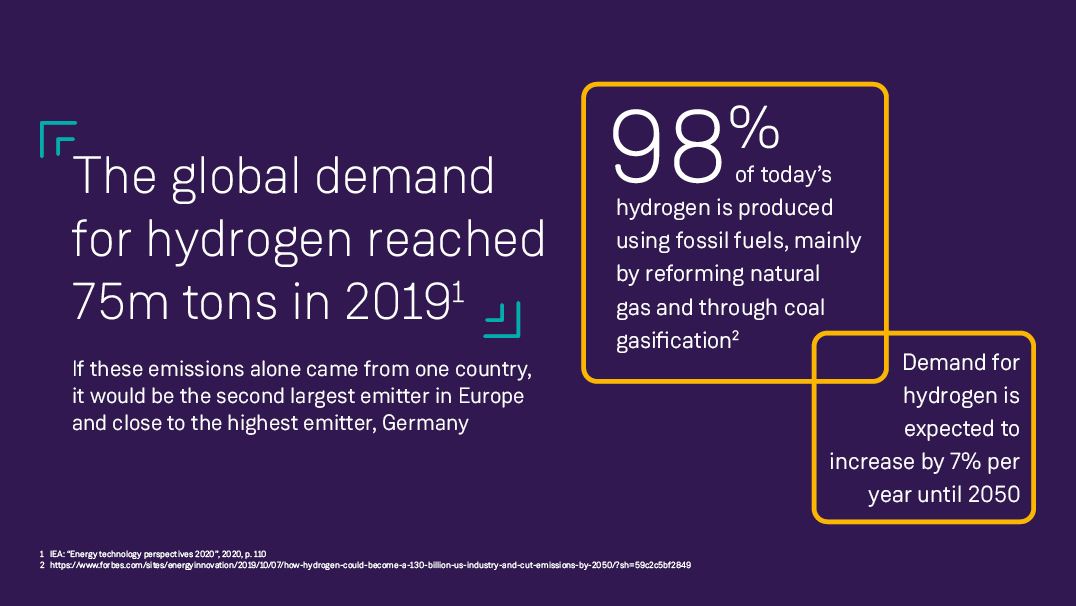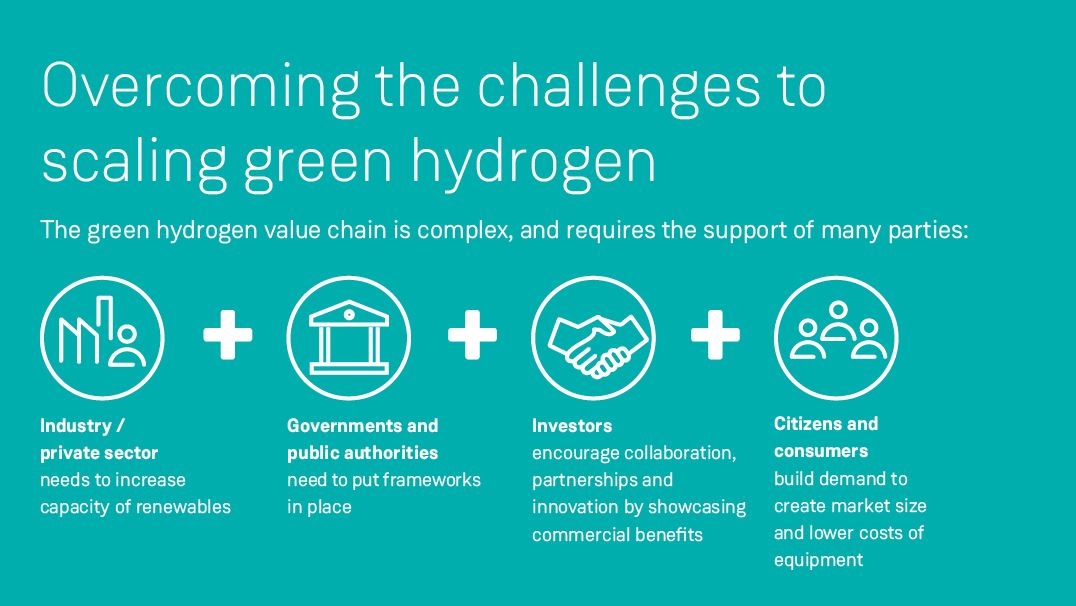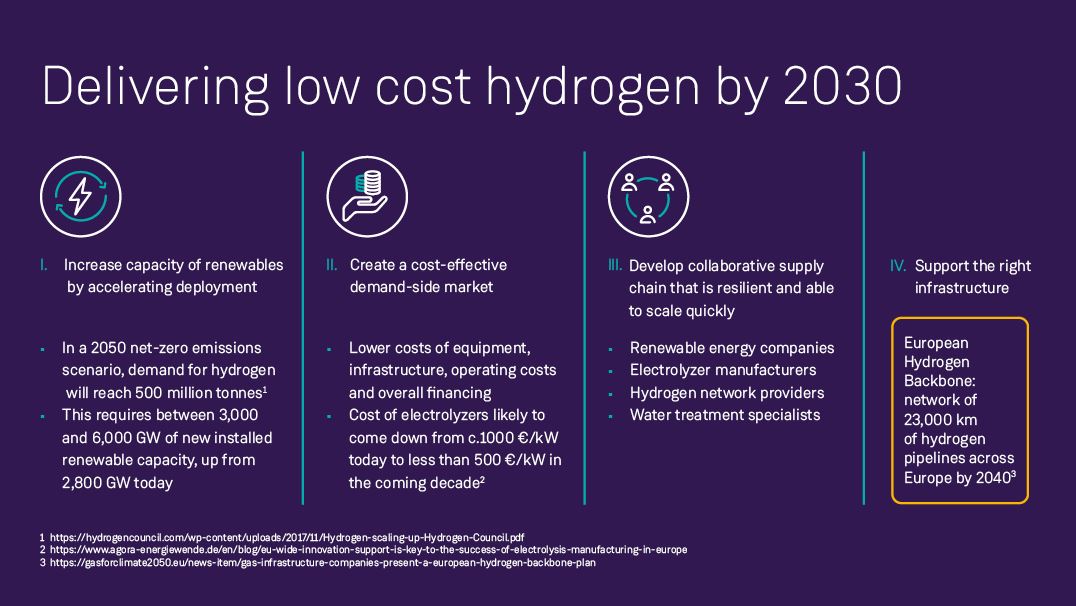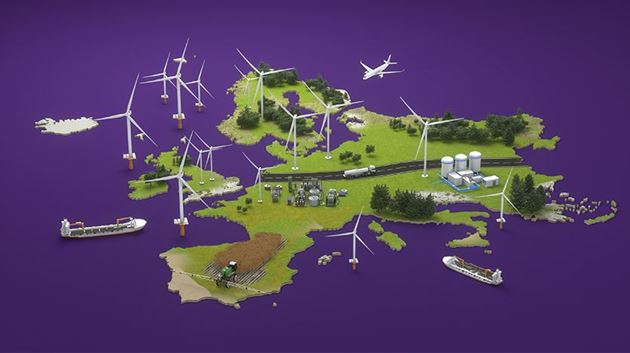
Unlocking the Green Hydrogen Revolution
By driving down the cost of green hydrogen by 2030, wind can accelerate a carbon-free future and halt climate change
Without the production of green hydrogen on an industrial scale, the world will not achieve carbon neutrality by 2050 and the earth’s temperature will continue to rise. Its importance is underlined by the fact it features in all eight of the European Commission’s net zero emissions scenarios for 2050.
You have questions about our hybrid power and storage solutions? You are interested in partnering up with Siemens Gamesa? Please contact us.
info@siemensgamesa.comMissed the “Unlocking the green hydrogen revolution” event with experts from across the renewables sector and policy environment, all focused on how green hydrogen can be produced cost-effectively and at scale to deliver a cleaner and more sustainable future? Watch a recording of the one-hour event that took place on June 9, 2021:

Low-cost production is critical to decarbonize hard-to-electrify sectors such as steel and chemical industries, maritime shipping, long-haul road transport and aviation. This paper sets out an ambitious plan to deliver cost-competitive green hydrogen by 2030. And while the scale of the challenge is significant, if industry, governments and investors work together it is achievable.
Key to unlocking the green hydrogen market is price parity or fossil parity with grey hydrogen, hydrogen produced by fossil fuels. Fossil parity is where the price of green hydrogen equals that of grey hydrogen, and Siemens Gamesa believes that this is achievable from onshore wind generation by 2030 and from offshore wind generation by 2035.
While it took three decades for wind and solar to reach grid parity with fossil fuels, green hydrogen needs to be cost-competitive with fossil-fuel generated hydrogen in one decade. There is no time to waste if we are to deliver on this timeline.
In 2019, the global hydrogen demand was 75 million tons[1], accounting for 6% of global natural gas consumption and 2% of the coal consumption. Demand for hydrogen in hard-to-electrify sectors is expected to increase by 7% per year until 2050.
By eliminating greenhouse gas emissions from today’s hydrogen production by using renewable energy instead of fossil fuels, we will deliver a cleaner, more sustainable future. The unlimited supply of renewable energy and capabilities having proven by the renewables value chain mean that the volume of green hydrogen production is almost unlimited.
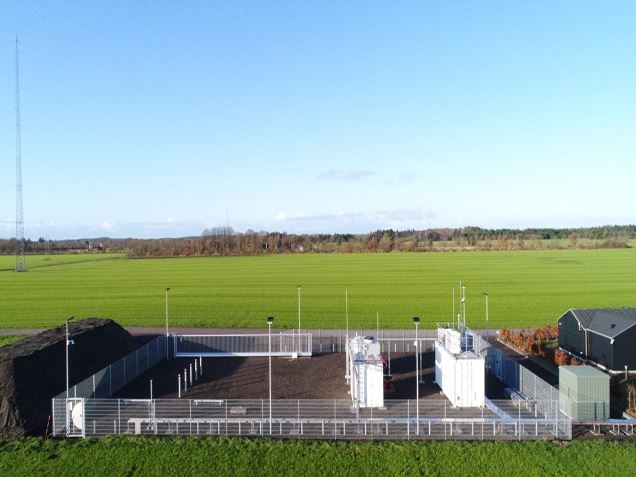
There needs to be a collaborative and joined-up approach between the private sector, governments and public authorities, and investors to overcome the triple challenge of scaling up production which includes:
- Coordinating efforts to increase installed electrolyzer capacity, which in Europe alone needs to scale up from less than 1GW today to 40GW by 2030; and 500GW by 2050 based on projected investment in production capacities by mid-century[2].
- Developing solutions to effectively store, distribute and transport hydrogen, whether in gaseous or liquid form;
- Putting in place policy frameworks that support and encourage ongoing private sector innovation in green hydrogen while securing future market demand.
We can’t underestimate the challenge of producing green hydrogen at the scale needed to deliver on the 2050 net zero targets. There are four key requirements to deliver low-cost green hydrogen at scale within the next decade:
- Increase the capacity of renewables: The green hydrogen revolution can only happen if renewable energy deployment is accelerated dramatically.
- Create a cost-effective demand-side market for green hydrogen: Increasing demand will get a green hydrogen economy started, create market size and help lower costs of equipment, infrastructure, operating costs and also lower the overall financing cost.
- Develop a supply chain: No one provider in the market which can take ownership of the entire hydrogen production and distribution process – without working together green hydrogen will remain fragmented, unfulfilled, costly and outside of the energy mainstream.
- Support the right infrastructure: Logistics, storage and distribution need to be factored into the end-to-end green hydrogen market. There needs to be investment in hydrogen grid networks, whether new or retrofitted, to embed green hydrogen as a mainstream energy source.
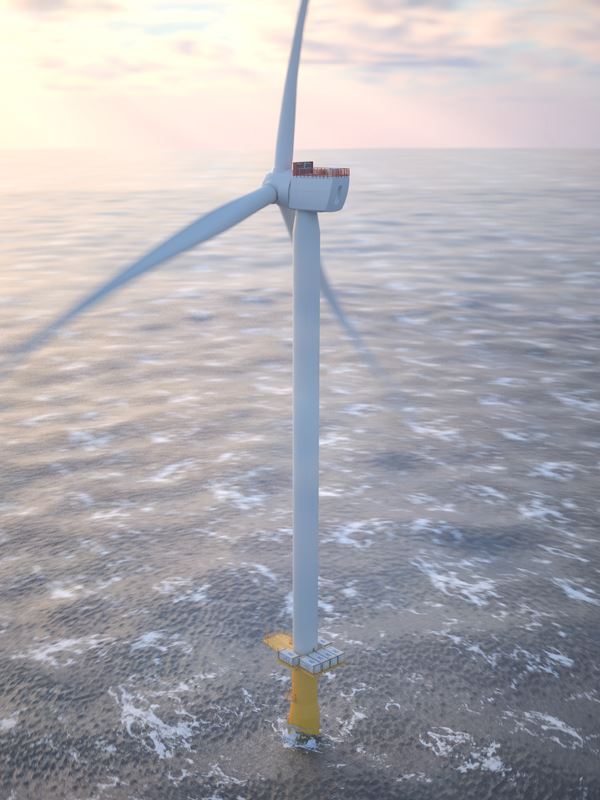
Green hydrogen offers immense potential as we seek to decarbonize the global economy and address the climate emergency. Innovating in wind-to-hydrogen solutions, both onshore and offshore, further unlocks the potential of wind energy, hastening the journey towards net zero.
The scale of the challenge is clear but the opportunity in terms of delivering a carbon-neutral future is clearer still. Industry, governments and investors need to work together to build an environment where innovation is encouraged, where market demand is fostered and where collaboration between different players in the supply chain is incentivized[3].
[1] https://www.iea.org/reports/energy-technology-perspectives-2020
[2] https://www.irena.org/publications/2020/Dec/Green-hydrogen-cost-reduction
[3] https://www.irena.org/publications/2020/Nov/Green-hydrogen
